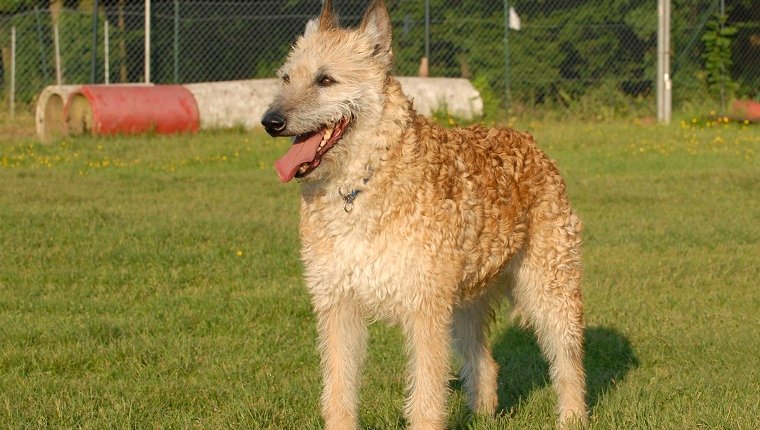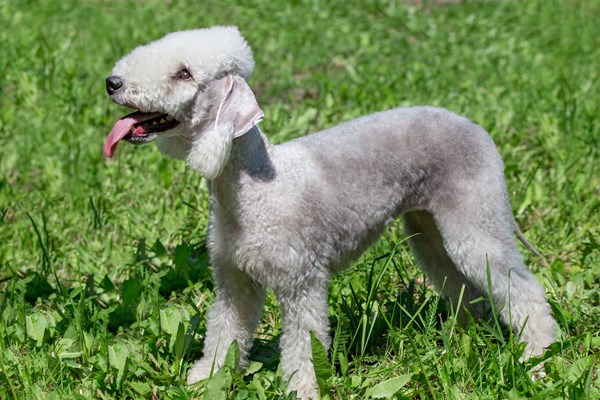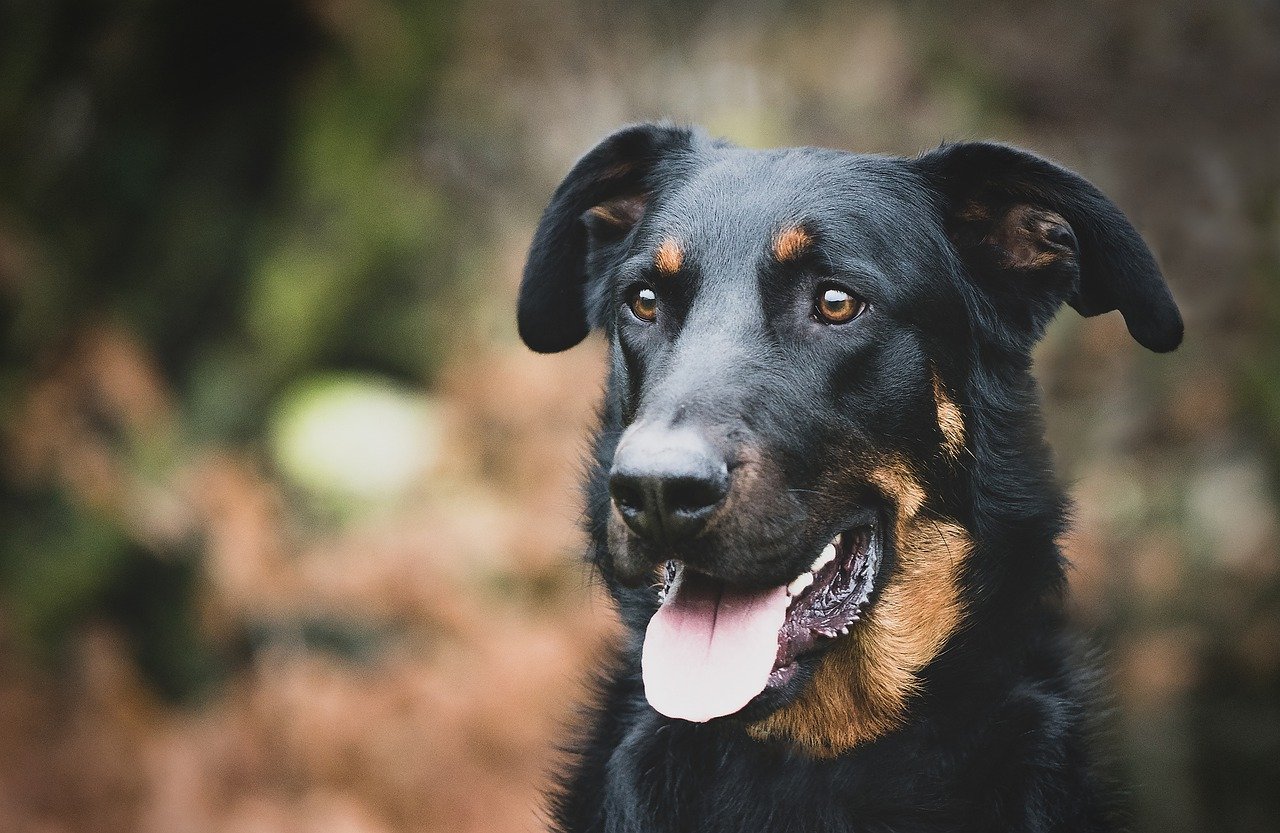Belgian Malinois Dog Overview
The Belgian Malinois is indeed a strong dog with square proportions and somewhat substantial bone that is oval in shape.
This breed is graceful, with a prominent head carriage.
The overall impression is one of strength without bulk. The gait is light and graceful, appearing effortless rather than hard driving.
Such a stride conveys the image of tenacity. The Malinois has a habit of running in a large circle rather than in a straight line.
With a deep undercoat, the coat is rather short, straight, and firm. The expression is perceptive and inquisitive.
Belgian Malinois Highlights
- Belgian Malinois have a lot of energy and require a lot of exercise. Make sure you have the space and time to accommodate it.
- Malinois are highly intelligent and alert dogs. They have strong herding and defense instincts as well. Early and continuous training is essential!
- Despite their size, they are highly people-oriented and want to be part of family activities.
- Malinois are heavy shedders. They have a lot of shedding twice a year.
- Belgian Malinois are active, playful, and sensitive dogs. Training should be enjoyable, regular, and upbeat.
- Malinois are not advised for inexperienced dog owners because of their intellect, strong energy, and other qualities.
Belgian Malinois Breed Features & Ratings:
Rated base on a 5 Star Scale
ENERGY LEVEL: 4 Star
EXERCISE REQUIREMENTS: 5 Star
PLAYFULNESS: 1 Star
AFFECTION LEVEL: 3 Star
FRIENDLINESS TO DOGS: 3 Star
FRIENDLINESS TO OTHER PETS: 3 Star
FRIENDLINESS TO STRANGERS: 1 Star
WATCHFULNESS: 5 Star
EASE OF TRAINING: 5 Star
GROOMING REQUIREMENTS: 1 Star
HEAT SENSITIVITY: 3 Star
VOCALITY 5 Star
Belgian Malinois Characteristics:
- Dog Breed Group: Herding Dogs
- Height: At the shoulder, it should be between 22 and 26 inches tall.
- Weight: 40 to 80 pounds
- Life Span: 12 to 14 years
- Type: Purebred
- AREA OF ORIGIN: Belgium
- DATE OF ORIGIN: 1800s
- OTHER NAMES: Malinois, Chien De Berger Belge, Mechelaar, Mechelse Herder, Mechelse Scheper, Pastor Belga Malinois
- Temperament: Active, Alert, Confident, Friendly, Hard-working, Protective, Stubborn, Watchful
- Activities: Tracking, Herding, Conformation, Police and Military Work, Search and Rescue, Carting, Agility, Obedience, Schutzhund
- Color: Fawn to rich mahogany with black tips on the hairs
- Litter Size: 6 to 10 puppies
- Puppy Prices: $1000 – $1800 USD on average
Belgian Malinois Health:
The Malinois is a generally healthy breed, and a responsible breeder will test breeding stock for health issues constituting hip and elbow dysplasia and some eye disorders.
As with all breeds, the ears should be checked for symptoms of illness on a regular basis, and the teeth should be washed routinely.
The National Breed Club recommends the following health tests:
- Hip Evaluation
- Elbow Evaluation
- Ophthalmologist Evaluation
Belgian Malinois Grooming:
Malinois dogs have short, straight hair that is rough to the touch. The thick overcoat and deep undercoat provide weather resistance for a dog bred to work outside in all weather situations.
Around the neck, the hair is somewhat longer, making a mini-mane. The coat is usually fawn to mahogany in color, with a black mask on the face, black ears, and black hair tips.
Fawn-colored Malinois occasionally have a speck of white on the tips of their toes or a small white spot on the chest. The Malinois has a short, smooth coat that is easy to groom.
Brush it once a week with a firm bristle brush, and bathe only when absolutely required. The Malinois sheds all year, but more heavily in the spring and fall.
Brush your Malinois’ teeth at least twice a week to remove tartar and the bacteria that live inside it. Brushing twice a day is even preferable if you want to avoid gum disease and foul breath.
If your dog’s nails don’t wear down naturally, you should trim them on a regular basis. They’re too lengthy if you can hear them clicking on the floor.
Short, carefully trimmed nails maintain the dog’s feet in good condition and prevent scratches on your legs when your Malinois rushes up to welcome you.
When your Malinois is a puppy, start getting them acclimated to being brushed and examined. Handle their paws frequently (dogs are sensitive about their feet) and inspect their lips and ears.
Make grooming a pleasurable process full of praise and prizes, and you’ll build the framework for smooth veterinarian tests and other handling when they’re an adult.
Check for sores, rashes, or symptoms of infection such as redness, tenderness, or inflammation on the skin, nose, mouth, and eyes, and feet while you groom.
There should be no explicit redness or discharge in the eyes. Your thorough weekly examination will assist you in detecting potential health issues early on.
Belgian Malinois Exercise:
The Malinois, who is very clever, athletic, and muscular, as well as extremely dedicated, needs to be actively engaged with his owner, both mentally and physically.
This is not a dog who should be kept in the backyard, and daily walks are insufficient. Exercise, and plenty of it, preferably alongside his owner, is essential to the breed’s happiness.
Depriving a Malinois of exercise and human contact is equivalent to depriving him of his fundamental reason for being.
Malinois are excellent running, hiking, and bicycling partners, as well as competitors in agility, tracking, herding, obedience, and Schutzhund (protection).
Belgian Malinois Training:
The Belgian Malinois is a highly lively dog that, if not properly educated and handled, can become restless or agitated. All Malinois must be properly trained.
These canines will ideally have been trained to do a task and will take delight in doing so. Furthermore, significantly more strenuous exercise than the ordinary dog is required for this breed.
Aside from vigorous walks, try to give your dog some off-leash time in an enclosed yard. Be cautious that their herding instinct may lead to a proclivity to chase automobiles or bicycles.
This breed is an ideal choice for participation in dog sports or any activity that requires concentration and endurance.
Be careful that if sufficient training and exercise are not provided, the Malinois may become nervous, anxious, or develop behavioral issues.
The Belgian Malinois is unquestionably not the breed for everyone. They are not well-suited to apartment living since they require a fenced-in yard or area to run on.
If you live an active lifestyle, have plenty of time to spend with your dog, and want an active dog with a strong personality, this is the dog for you. They must be properly trained and socialized.
Belgian Malinois Food and Nutrition:
Feed your Belgian Malinois 1 to 1.5 cups of dry dog food twice a day. The amount that is necessary will vary depending on the size, age, and activity level of your pet.
Your dog’s demands will alter over time, and you should consult with your veterinarian for precise guidance. Ensure that you have a stock of fresh, clean water.
Obesity is a problem that affects all pets. If you think that your dog is gaining weight, consult with your veterinarian about changing its eating schedule, amount, kind of food, and activity routine.
Belgian Malinois Temperament and Personality:
This is an exceptional working dog who is self-assured and protective in any setting.
They are affectionate with family members but hesitant with strangers until they get a chance to assess them. The Malinois has great watchdog abilities.
They exert only as much force as is necessary to safeguard their people and property.
In this breed, shyness and hostility are never suitable. Temperament, on the other hand, does not just happen.
A variety of things influence it, including genes, training, and socialization. Puppies with good temperaments are interested and playful, eager to approach and be held by people.
Meeting the dog’s parents, siblings, or other relatives may also be beneficial in determining what a baby dog will be like when he or she grows up.
The Malinois, like all dogs, need early socialization—exposure to a variety of people, sights, noises, and experiences—when they are young. Socialization ensures that your Malinois puppy develops into a well-rounded dog.
Enrolling them in puppy kindergarten is a terrific place to start. Inviting people to your home on a frequent basis, as well as taking your dog to busy parks, stores that accept dogs, and on leisurely strolls to meet neighbors, will help them improve their social skills.
Belgian Malinois Care/Upkeep:
Belgian Malinois may thrive in tiny spaces if given ample exercise. They like chilly climates but may adapt to warmer conditions.
They should always be treated as members of the family and kept indoors. In addition to long walks or jogging, provide your Malinois with off-leash exercise in an enclosed area if possible.
Malinois require around 20 minutes of movement three or four times every day, and a leisurely walk will not suffice.
They’re designed for activity. If you enjoy hiking or jogging, your Belgian Malinois will be delighted to accompany you.
Consider training them for obedience or agility competitions. There is no difference what you do as long as you keep them engaged.
Expect them to run in enormous circles in your yard as a result of their herding history. Puppies require a variety of exercises.
Puppy kindergarten once or twice a week from nine weeks to four months of age is a terrific opportunity for them to acquire exercise, training, and socialization, as well as 15 to 20 minutes of fun in the yard in the morning and evening.
Toss a ball for them to retrieve. Weekly obedience training, daily half-mile walks, and yard playing will suit their demands from four to six months of age.
Execute and play fetch with a ball or Frisbee for up to 40 minutes between the ages of six months and a year, preferably in the mornings or evenings rather than in the heat of the day. Continue to limit your walks to half a mile.
After a year, your Malinois puppy can start jogging with you, but maintain the distance to less than a mile and give them pauses. Hard surfaces, such as asphalt and concrete, should be avoided.
You can gradually increase the distance and duration of your runs as they mature. These progressively increased amounts of activity will safeguard their growing bones and joints.
Malinois are very trainable and sensitive dogs. Be firm, cool, and consistent in your dealings with them. Anger and physical force are ineffective.
Belgian Malinois Relationship with Children and Other Pets
Malinois are good with children, significantly if they are raised with them, although due to their herding history, they may nip at their heels and try to herd them when playing.
You must teach your Malinois that this is inappropriate behavior. An adult Malinois who is not used to being around children may do best in a family with children who are mature enough to engage with them correctly.
Constantly teach youngsters how to approach and touch dogs, and always supervise any interactions between dogs and small children to avoid biting or ear or tail pulling on either party’s side.
Teach your child never to approach a dog eating or trying to grab the dog’s food. No dogs should be left alone with a youngster.
Malinois can be hostile against other dogs and cats if not raised with them from puppyhood. You must start early and praise acceptable behavior if you want your Malinois to get along with other animals.
It is your obligation to keep your Malinois under control in the presence of other animals if he has not been socialized with them.
Belgian Malinois Names
| Rank | Boy Names | Girl Names |
| 01 | Charlie | Lucy |
| 02 | Leo | Lola |
| 03 | Toby | Sadie |
| 04 | Jake | Zoey |
| 05 | Riley | Ruby |
| 06 | Tucker | Missie |
| 07 | Sam | Roxy |
| 08 | Riley | Coco |
| 09 | Buster | Layla |
| 10 | Duke | Maya |
All About Belgian Malinois
The Belgian Malinois (pronounced MAL-in-wah) is a type of dog that resembles a German Shepherd Dog at a first impression. Malinois are fawn-colored canines with short hair and a black mask.
They are one of four varieties of Belgian herding dogs and have been displayed as a breed in the United States since 1959. Malinois are a breed of dog that originated in Malines, Belgium.
They have a lot of stamina and enjoy working. They are bright, active canines who excel at a variety of jobs.
Aside from herding, they excel at police work, search and rescue, and performance sports such as agility.
People who are unfamiliar with the Malinois frequently confuse it with the German Shepherd Dog (GSD); however, the two breeds differ significantly in body structure and temperament.
Malinois are petite, light-boned dogs. These breeds are fawn, crimson, or brown with black hair tips, whereas GSDs are usually tan with a black saddle.
Furthermore, the Malinois has a more polished, chiseled head and smaller, more triangular ears than the GSD. Malinois are keen learners that are eager to please their owners.
Obedience, tracking, agility, flyball, herding, displaying, Schutzhund and other protective sports, search and rescue, and police work are areas where they excel.
Trainers describe them as having a strong “play drive,” which means they love to play and will do almost everything you ask them to do.
However, the owner of a Malinois should never forget that this is a breed that was developed to protect and herd. Fear or shyness may cause violent behavior in poorly socialized dogs.
Belgian Malinois History:
The Belgian Malinois is a breed of Belgian shepherd dog that is endemic to the country. The Tervuren, Groenendael, and Laekenois are the other three kinds.
These Belgian shepherd dogs were bred in Belgium in the late 1800s and are known as the Chien de Berger Beige in Belgium and France.
These dogs were named after the city of Malines, where trainers and working competitors developed it.
The Belgian Malinois initially arrived in the United States around 1911 and quickly became popular. During World War I, several were utilized as military labor dogs.
During the Great Depression, the breed declined in popularity, but it regained popularity in the late 1950s and early 1960s, and it was recognized by the American Kennel Club (AKC) in 1959.
Belgian Malinois were regularly observed serving as police dogs, military working dogs, drug detection dogs, and search and rescue dogs around the start of the twenty-first century.
Belgian Malinois are members of Navy SEAL teams and have participated in missions such as the one that ended in the assassination of Osama bin Laden in 2011.
The Secret Service employs Belgian Malinois to monitor the White House grounds. These dogs are equipped with body armor and night-vision goggles. They can participate in military operations via skydiving.
Where to Adopt Belgian Malinois:
Professional breeders across the country raise this more unusual kind of dog. Because they are not widely available, engage with a breeder who provides correct medical information and references.
The American Belgian Malinois Club is a fantastic place to look for reliable breeders and local groups.
The American Belgian Malinois Rescue is a non-profit organization dedicated to finding foster and forever homes for Belgian Malinois rescues around the country.
More Dog Breeds and Further Research:
If you believe the Belgian Malinois is the breed for you, do your study before purchasing one.
To learn more, talk to your veterinarian, other Belgian Malinois owners, reputable breeders, dog trainers, and rescue organizations.
If you’re interested in similar breeds, look into them to weigh the benefits and drawbacks.
Belgian Malinois Fun Facts:
- Belgian Malinois were named for a Belgian City.
- Belgian Malinois were bred to be herding dogs.
- Belgian Malinois have long worked with police officers.
- Belgian Malinois served in World War i.
- Belgian Malinois work with Navy Seals.
- Belgian Malinois skydive.
Frequently Asked Questions (FAQs):
The Belgian Malinois dog breed were bred to be herding dogs originally. They are now used as police and military dogs, as guard dogs, and as beloved family members. These are purebred dogs, you may be able to discover them at breed-specific rescues and shelters.
He may come from a working-dog family, but he values camaraderie and family time above all else. This dog, an alert and watchful friend to children, thrives when given a continuous dosage of good-natured play, snuggling, and conversation.
Belgian Malinois are generally renowned as a breed that enjoys swimming. The majority of Belgian Malinois are strong swimmers who will immediately enter the water.



